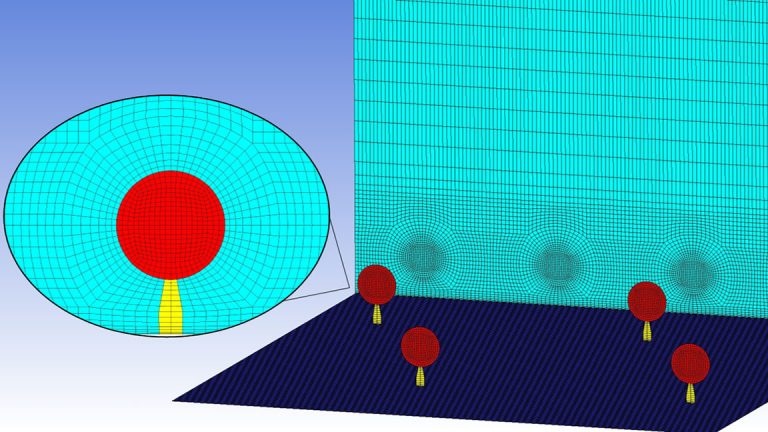Dec 13 2019
Offshore generation of wind power has turned out to be a highly potential source of renewable energy. However, the aerodynamic effects of huge wind farms have not yet been understood properly.
 Cross-sectional mesh for the rotor disc (red), tower (yellow), and surrounding area (light blue). Image Credit: Lun Ma.
Cross-sectional mesh for the rotor disc (red), tower (yellow), and surrounding area (light blue). Image Credit: Lun Ma.
A new study recently published in the Journal of Renewable and Sustainably Energy, from AIP Publishing, offers a better understanding of how the structures essential for wind farms have an impact on the flow of air.
Researchers from Cranfield University and the University of Oxford have developed a theoretical model for predicting the aerodynamic effects of wind turbine towers on wind farm performance.
They used a so-called two-scale coupled momentum balance method to computationally and theoretically reconstruct conditions that might be experienced by huge wind farms in the future. These conditions include the dampening effect that arises when turbines are spaced closer to each other.
According to Lun Ma, the author of the study, the key aspect of the study is that the latest update to their model seems way beyond a wind turbine’s rotor.
In this paper, we have newly taken into account the influence of wind turbine towers that act as support structures, which was ignored in the original two-scale momentum model. Therefore, essentially, the new model helps us understand the potential impact of wind turbine support structures on the wind farm blockage effect.
Po-Lun Ma, Study Author, Cranfield University
Blockage effect is something that is faced even by expansive offshore wind farms. Here, the wind slows down as it comes closer to turbines. These wind farms also face a so-called wake effect, where the turbines slow the wind down as it passes by them.
Before constructing a wind farm, it is quite difficult to predict its characteristics exactly. Therefore, this remains a great challenge for the industry.
To find a solution to this, the researchers resorted to using two-scale momentum modeling. This involves simulating how the efficiencies of individual wind turbines are affected as most of them are spaced closely together inside a wind farm while considering a perfect, boundlessly large wind farm.
This efficiency reduction predicted by the two-scale momentum model is closely related to the wind farm blockage effect. However, the original two-scale momentum model was a highly simplified model and needed further improvements for practical applications.
Po-Lun Ma, Study Author, Cranfield University
The researchers combined the momentum balance equation with an alternative method, known as actuator disk theory. This technique allowed them to include other factors, like the effect of turbine support structures. The approach also enabled them to consider more practical scenarios, such as finite-sized wind farms.
Then, the team performed simulations using computational fluid dynamics to confirm whether such structures add to the blockage effect, specifically through the drag on the wind they generate.
According to Ma, the team will make efforts to better understand how the blockage effect differs with changing weather conditions.